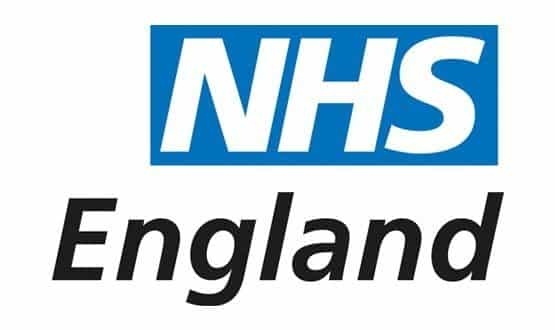Colin and Clive talk 20 years of EPRs
- 24 March 2016

It is a bitterly cold day when Digital Health settles into King’s College Hospital’s staff café with Colin Sweeney and Clive Stringer.
It was 1993 when the recently retired IT director and deputy IT director first met on this site; and a different world entirely in terms of technology. At the time, NHS IT was run on mainframe computers and green screens.
Modern, for the 1990s
In 1993, Stringer had just returned to King’s after a time at Welcome Diagnostics. He had first started at the hospital in 1980 as a medical laboratory scientific officer, but his aptitude for IT became obvious when he started uploading Lancet articles onto the mainframe computer to build up a reference library.
Sweeney was working for Sema, leading a team at King’s implementing its HS2000 electronic patient record.
The implementation eventually “fell apart”, Sweeney says, because while it was supposed to be an “all singing, all dancing electronic patient record”, it was in reality “full of bugs”.
His frank assessment may have been what prompted King’s to offer him a role as director of ICT, which he took up in 1995. Once in post, he started looking at other EPRs on the market.
Most of what he saw was “green screen” or teletype technology, but King’s wanted to move forward with a more modern system. On the table were LastWord from IDX, Cerner Millennium, and CareVision from HealthVision, which came to be owned by iSoft.
Sweeney and his team went to see CareVision and Millennium in use in the United States and were persuaded by the CareVision implementation.
“When we spoke to Cerner, it was always that they would take over all the IT and everything would be a Cerner solution. We had PathNet, but a different radiology system and theatre system; and we didn’t want to take things out, but fit together what we had to create a best-of-breed approach,” he says.
The national programme: a wrong turn
The local health authority agreed to help fund CareVision for King’s, as well as for Guy’s, St Thomas’ and Lewisham hospitals.
Working together, they got a good deal and King’s was the first to go-live in December 1998. Guy’s also managed to go-live, but before Lewisham could deploy, the National Programme for IT was set up.
It arrived with a vision of “ruthless standardisation” based on the deployment of nationally-contracted IT systems by major suppliers. In London, this was supposed to mean a capital-wide electronic patient record system that could used by both primary and secondary care; and other deployments were stopped.
“In that instance, the national programme put us back ten years,” Stringer says. “We had funding available to transform healthcare delivery in the way other sectors used IT to transform the way they did business.
“And we blew it because we went down the wrong avenue. We should have been concentrated on making systems talk to each other rather than implementing a common system across trusts.
“We knew at the time it wasn’t going to work. Anyone you talked to in the industry said: ‘This isn’t going to work.’ We said we should concentrate on standardisation and interoperability.
“Now that’s become flavour of the month again, but it’s not going to be easy – and we might have missed the boat because all the money has gone.”
Build it yourself
King’s managed to argue that it had a system that was more advanced than NPfIT was planning to deliver to it, and that its clinicians did not want to “take a step backwards” by going with the programme.
Along with Guy’s and five other iSoft users, it formed an agreement with the government to remain ‘out of cluster’; and never deployed Cerner Millennium, the EPR chosen for the capital by local service provider BT.
ISoft, meanwhile, was charged with developing a new EPR for the North, Midlands and East of England. Unfortunately, Stringer argues that all of the company’s resources went into that, rather than into developing the system it had already had deployed.
This meant the trust had to respond to demands for new functionality by developing this itself. Inpatient noting and clinical correspondence, for example, were both developed and supported in-house.
The approach has had its advantages. “Why we’ve been successful here is that people like the system and feel its right to use it; we’ve had strong clinical leadership from the start,” Sweeney says.
Before the EPR was in place, doctors would turn up to clinics to find no patient notes were available and with no idea of the results of any tests they had ordered. Junior doctors had to spend much of their time trying to track down images.
The implementation of the EPR erased many of these problems; and the addition of electronic ordering was another big step forward. “Results review and order communications was a really good thing to start with; clinicians immediately recognised the benefits of having that available to them,” Sweeney says.
“Other areas have been beneficial, but more challenging. E-prescribing took a long time but is now embedded into processes here at Denmark Hill.”
Back to the future with Allscripts
King’s is at the top of Digital Health’s Clinical Digital Maturity Index. Just as importantly, the trust’s IT team knows how dependent staff are on their digital systems because of the howls of protest if one of them is not available (a rare occurrence, Sweeney adds, hastily).
But developing and supporting complex systems has been a challenge, which will be greatly reduced when the trust moves to Allscripts Sunrise EPR in the summer.
This should mean it no longer needs to rely on systems built many years ago by “very clever people” who are long gone – and that staff are now wary of even touching. Sweeney cites the e-discharge system, developed 16 years ago, as an example.
“When we go to Allscripts, a lot of functionality is part of the core product so it will be properly supported,” Sweeney continues, adding that he is pleased that his last act as director of ICT at King’s was to sign the Allscripts contract.
This brings the trust’s journey full circle, as CareVision was taken over by Eclipsys, which then sold the UK side of the business to iSoft. Eclipsys, meanwhile, went on to become Allscripts in the US.
The cost dilemma
Ten years into the EPR project, Sweeney calculated that the trust had spent around £30 million, including all the staff and hardware and infrastructure. “We were quite fortunate; we got a very good deal to start with. Obviously things are more expensive now,” he says.
Unfortunately, IT has become more expensive just as trusts are facing some of the worst financial challenges that the two healthcare IT veterans have ever seen.
“Convincing our board that we needed to change [to Allscripts] was interesting at a time when we faced a massive deficit,” Sweeney acknowledges. “King’s has always teetered on breaking even; it’s never been financially rich, we’ve always had to use money carefully.”
However, he says the trust has squeezed its IT as far as it will go and an upgrade is essential. Like other organisations, it is also working in an environment in which the health secretary has called for the NHS to become ‘paperless’ – in the hope that this will help to ease some of the financial pressures on it.
“It’s always been a challenge whether to spend money on nurses or IT,” comments Sweeney. “However, I’ve always argued that IT does provide so much benefit and ultimately improve effectiveness and workflow.
“I wouldn’t say it saves money for the organisation, because you have to spend a lot on supporting resources to train and implement solutions. But, it’s a question of where you put that money. There’s lots of things you can do with IT that you can’t do with paper that will minimise risk and improve quality of care.”
Both Sweeney and Stringer are still working for King’s, but in different and part-time roles. So as they move on, are they leaving the future of NHS IT in a good place?
“I’m not positive about it,” Sweeney concludes. “Finance is a big issue. It does worry me that people are having to save pennies [while facing such a major IT agenda]. I do wonder whether that is achievable.”




